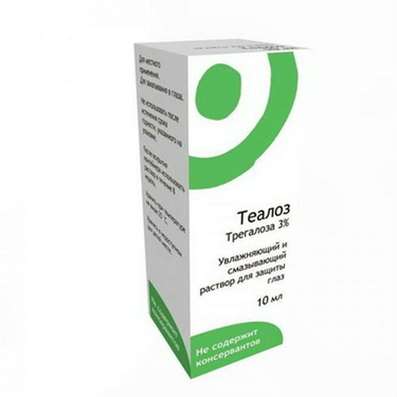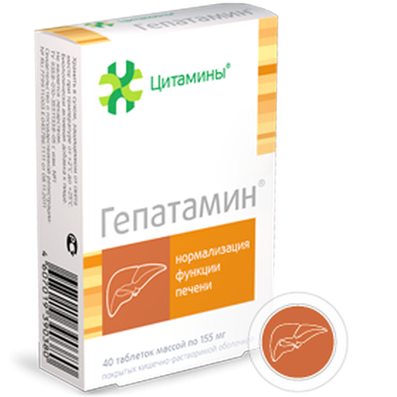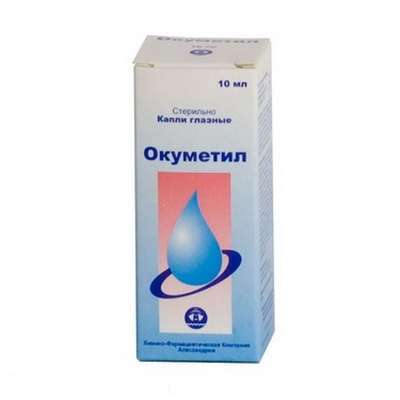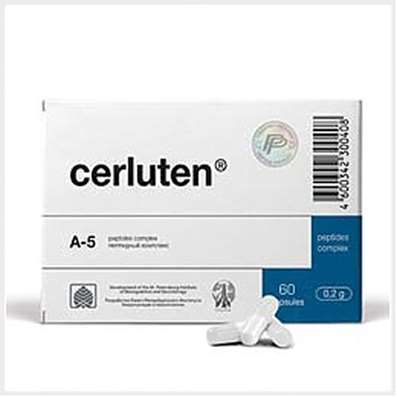Instruction for use: DuoResp Spiromaks
I want this, give me price
Active substance: Budesonide + Formoterol
ATX Code R03AK07 Budesonide + Formoterol
Pharmacotherapeutic group:
Bronchodilator combination means (beta2-agonists selective glucocorticosteroid + local) [beta-adrenergic agonist in combination]
The nosological classification (ICD-10)
J44 Other chronic obstructive pulmonary disease
Allergic bronchitis, Bronchitis asthma, Asthmatic bronchitis, wheeze bronchitis, Bronchitis is an obstructive, bronchi disease, Shortness of sputum in acute and chronic respiratory diseases, Cough in inflammatory diseases of the lung and bronchus, Reversible airflow obstruction, Reversible obstructive airway disease, Obstructive bronchitis disease, Obstructive lung disease, Obstructive bronchitis, Spastic bronchitis, Chronic lung disease, Chronic nonspecific lung diseases, Chronic obstructive pulmonary disease, Chronic obstructive bronchitis, Chronic obstructive airway disease, Chronic obstructive pulmonary disease, Restrictive lung pathology
J45 Asthma
Asthma physical effort, status asthmaticus, Bronchial asthma, Asthma lung flow, Bronchial asthma with obstruction of sputum discharge, Bronchial asthma heavy currents, Bronchial asthma physical effort, hypersecretory asthma, Hormone-dependent form of bronchial asthma, Relief of asthma attacks in bronchial asthma, Non-allergic asthma, nocturnal asthma, Exacerbation of asthma, Asthma attacks, Endogenous forms of asthma, Night asthma, Cough with bronchial asthma
Composition
The powder for inhalation dose 1 dose delivered
active substance:
Budesonide (micronized) 160/320 g
Formoterol fumarate dihydrate (micronized) 4.5 / 9 mcg
Excipients: lactose monohydrate - 5.10 mg *
* Specify the target amount of lactose monohydrate per delivered dose (is an estimate)
The drug forms
White or almost white powder without lumps or visible inclusions placed into a multidose powder inhaler for the mouthpiece cover translucent red. The inhaler should be no visible damage.
The metering indicator window should show the N 120 - Dosing 160 / 4.5 mcg / dose and N 60 - Dosing 320/9 micrograms / dose
pharmachologic effect
bronchodilatory, glucocorticoid, beta2-adrenomimeticheskoe.
pharmacodynamics
Preparation DuoResp Spiromaks comprises budesonide and formoterol, which have different mechanisms of action and exhibit an additive effect on reducing the incidence of exacerbations of asthma and COPD.
Special properties of budesonide and formoterol allowed to simultaneously use a combination of cupping or as maintenance therapy of asthma.
budesonide
Budesonide - GCS after inhalation which has a rapid (within hours) and the dose dependent anti-inflammatory effect on the airways, reducing the frequency and severity of symptoms of asthma exacerbations. In the appointment of inhaled budesonide observed lower incidence of serious adverse effects than with systemic corticosteroids. It reduces the severity of edema of the bronchial mucosa, mucus production, education, sputum and airway hyperresponsiveness.
Formoterol
Formoterol - selective agonist of β2-adrenergic receptors, which after inhalation causes a rapid and prolonged airway smooth muscle relaxation in patients with reversible obstruction of the airways. Dose-dependent bronchodilator effect occurs rapidly within 1-3 minutes after inhalation and lasts for at least 12 hours after administration of a single dose.
Formoterol + Budesonide
Bronchial asthma. Adding formoterol to budesonide reduces the severity of asthma symptoms, improves the function of the bronchi and reduces the frequency of exacerbations of the disease.
The drug DuoResp Spiromaks on bronchi function corresponds to the action of the combination of budesonide and formoterol monotherapies and exceeds the effect of budesonide. In all cases, cupping used β2-adrenostimulyatorov short-acting. There was no decrease in anti-asthmatic effect over time. The drug is well tolerated.
Clinical efficacy as maintenance therapy and cupping (only for dosing 160 / 4.5). During the observation of the 4447 patients treated with budesonide / formoterol as maintenance therapy and cupping for 6 to 12 months, there was a statistically and clinically significant reduction in the number of severe exacerbations, increasing the period of time prior to the first exacerbation in comparison with a combination of formoterol + budesonide or budesonide as maintenance therapy and β2-agonists for relief of attacks. Also notes the effective control of the symptoms of the disease, pulmonary function and decrease the frequency of inhalation destination for cupping. There was no development of tolerance to the prescribed therapy. For patients seeking medical treatment in connection with the development of an acute attack of asthma after inhaled budesonide / formoterol symptom relief (removal of bronchospasm) occurred as rapidly and efficiently as after administration of salbutamol and formoterol.
COPD. In patients with severe COPD in patients receiving the drug DuoResp Spiromaks a significant reduction in the frequency of exacerbations was observed compared to those treated as formoterol therapy alone or placebo (mean rate of exacerbations - 1.4 compared with 1.8-1.9 in the group placebo / formoterol). There was no difference between taking the drug DuoResp Spiromaks and formoterol in the index OFB1.
Pharmacokinetics
Suction. The drug is bioequivalent DuoResp Spiromaks respective monotherapies in relation to systemic effects of budesonide and formoterol. In spite of this, a slight increase was observed suppression of cortisol after ingestion DuoResp Spiromaks compared to monotherapies. This difference has no impact on clinical safety. No evidence of pharmacokinetic interactions between budesonide and formoterol.
Pharmacokinetic metrics for the respective substances are comparable after administration of budesonide and formoterol as monotherapies and as part of the preparation DuoResp Spiromaks. For budesonide, when administered as part of a combined preparation, AUC somewhat larger drug absorption is faster and Cmax value in the blood plasma above.
For formoterol when administered as part of a combined preparation Cmax plasma coincides with that for the monopreparation. Inhaled budesonide is rapidly absorbed and reaches Cmax in the plasma after 30 minutes after inhalation. The average dose of budesonide, got into the lungs after inhalation is 32-44% of the delivered dose. Systemic bioavailability is about 49% of the delivered dose. In children aged 6 to 16 years, the average dose of budesonide, got into the lungs after inhalation, does not differ from that of adult patients (final concentration of drug in blood plasma was not determined).
Inhaled formoterol is rapidly absorbed, reaching Cmax in plasma 10 minutes after inhalation. The average dose of formoterol, got into the lungs after inhalation is 28-49% of the delivered dose. Systemic bioavailability of approximately 61% of the delivered dose.
Distribution. The plasma protein binds approximately 50% to 90% of formoterol and budesonide. Vd for formoterol is about 4 l / kg and budesonide - 3 L / kg. Formoterol is inactivated by conjugation (to form active-demethylated metabolites, mostly in the form of inactivated conjugates).
Budesonide undergoes biotransformation intense (about 90%) at the first passage through the liver with the formation of metabolites with low GCS activity. GCS activity main metabolites 6-.beta.-gidroksibudesonida and 16-alpha-hydroxyprednisolone does not exceed 1% of similar activity of budesonide. There is no evidence of interaction of metabolites or substitution reaction between budesonide and formoterol.
Metabolism. The main part of the dose of formoterol is metabolized in the liver and then excreted by the kidneys. After inhalation 8-13% delivered dose of formoterol is excreted unchanged in the urine. Formoterol has a high systemic clearance (approximately 1.4 L / min); T1 / 2 of the drug is on average 17 hours. Budesonide is metabolized primarily by CYP3A4 enzyme. The metabolites of budesonide are excreted in the urine in unchanged form or in the form of conjugates. In urine found only a small amount of unchanged budesonide. Budesonide has a high systemic clearance (approximately 1.2 L / min). The pharmacokinetics of formoterol in children and patients with renal insufficiency studied. Budesonide and formoterol concentration in blood plasma can be increased in patients with liver disease.
Indications of DuoResp Spiromaks
asthma (insufficiently controlled by taking inhaled corticosteroids and β2-agonists short-acting or adequately controlled with inhaled corticosteroids and β2-adrenostimulyatorov long-acting);
chronic obstructive pulmonary disease (symptomatic therapy in patients with severe chronic obstructive pulmonary disease - FEV1 <50% of the calculated level of the alleged - and repeated exacerbations in history that have marked symptoms despite treatment with bronchodilators long-acting).
Contraindications
Hypersensitivity to budesonide, formoterol or inhaled lactose;
Children up to age 18 years.
Precautions: pulmonary tuberculosis (active or inactive form); fungal, viral or bacterial respiratory infections, hyperthyroidism, pheochromocytoma, diabetes, uncontrolled hypokalemia, idiopathic hypertrophic subaortic stenosis, severe hypertension, aneurysm of any location or other severe cardiovascular disease (ischemic heart disease, tachyarrhythmia or cardiac failure, severe) lengthening the interval QT (receiving formoterol may cause lengthening of the QTc-interval), lactose intolerance, lactase deficiency or glucose-galactose malabsorption.
Pregnancy and breast-feeding
No clinical data on the use of the drug DuoResp Spiromaks or formoterol and budesonide sharing during pregnancy.
During pregnancy, the drug DuoResp Spiromaks should be used only in cases where the benefit of the drug outweighs the potential risk to the fetus.
It should use the lowest effective dose of budesonide needed to maintain adequate control of asthma symptoms.
Iigaliruemy budesonide is excreted in breast milk but is not marked when used in therapeutic doses, effects on the child. It is not known whether formoterol passes into breast milk of women. The drug DuoResp Spiromaks can be assigned to nursing women only if the expected benefit to the mother is greater than any possible risk to the child.
Side effects
Against the backdrop of a joint appointment of two drugs has not been observed to increase the incidence of adverse reactions. The most common adverse reactions associated with taking the drug are such pharmacologically expected to β2-agonists unwanted side effects like tremors and heart palpitations. Symptoms are usually mild severity and tested a few days after the start of treatment. During the 3-year clinical study in COPD budesonide application on the skin and bruising occurred pneumonia at 10 and 6% respectively, while in the placebo group - with a frequency of 4 and 3% (p <0.001 and p <0.01 respectively).
The frequency is defined as follows: very common (≥1 / 10); commonly (≥1 / 100, <1/10); uncommon (≥1 / 1000, <1/100); rare (≥1 / 10,000, <1/1000); very rare (<1/10000) and not known (can not be estimated from the available data).
Immune system: rare - immediate hypersensitivity reactions and delayed-type (rash, hives, itching, dermatitis, angioedema and anaphylactic reaction).
From endocrine system: very rarely - Cushing's syndrome, adrenal suppression, growth retardation, decreased bone mineral density.
On the part of metabolism and nutrition: rarely - hypokalemia; very rarely - hyperglycemia, signs or symptoms of systemic GKS- effects (including hypofunction of the adrenal glands).
On the part of the psyche: rarely - excitement, agitation, anxiety, sleep disorders; very rarely - depression, behavioral disorders.
Systemic effects of inhaled corticosteroids may occur when taking high doses for a long time. Use of β2-agonists may lead to an increase in blood insulin, free fatty acids, glycerol and ketone derivatives.
Interaction
Receiving 200 mg ketoconazole 1 time per day increases in the plasma concentration of oral budesonide (3 mg single dose) when coadministered an average 6-fold.
When assigning ketoconazole at 12 h after administration of budesonide in the plasma concentration of the latter was increased an average of 3 times. Information about such interactions with inhaled budesonide is not, however, expect a noticeable increase in the concentration of drug in blood plasma. Since the data for recommendations on the selection of doses available, to avoid the above combination of drugs. If possible, the time intervals between administration of ketoconazole and budesonide should be maximized. You should also consider reducing the dose of budesonide. Other potent inhibitors of CYP3A4, probably also can significantly increase the plasma concentration of budesonide. Blockers of β2-adrenergic receptors may attenuate the effect of formoterol. The combination of budesonide + formoterol should not be administered concurrently with β- blockers (including eye drops), with the exception of cases of forced.
Co-administration of a combination of formoterol and budesonide + quinidine, disopyramide, procainamide, phenothiazines, antihistamines (terfenadine), MAO inhibitors and tricyclic antidepressants can prolong the QT interval and increase the risk of ventricular arrhythmias.
In addition, levodopa, levothyroxine, oxytocin and alcohol can reduce the tolerance of the heart muscle to β2-adrenoceptor agonists.
Concomitant use of MAO inhibitors and drugs with similar properties such as furazolidone and procarbazine, may cause an increase in blood pressure. There is an increased risk of arrhythmias in patients receiving general anesthesia, halogenated hydrocarbons drugs.
With simultaneous use of a combination of formoterol and budesonide + other β-adrenergic drugs may increase the side effects of formoterol. As a result of the use of β2-agonists may occur hypokalemia, which may be exacerbated by the concomitant treatment of xanthine derivatives, corticosteroids or diuretics. Hypokalemia may enhance susceptibility to the development of arrhythmias in patients receiving cardiac glycosides.
There was no interaction of budesonide and formoterol with other drugs used to treat asthma.
Dosing and Administration
Inhalation.
Bronchial asthma
DuoResp Spiromaks drug is not intended for the initial treatment of bronchial asthma and mild persistent intermittent flow. Titration of drugs included in the drug DuoResp Spiromaks occurs individually and depending on the severity of the disease. This should be considered not only at the start of combination therapies but also changing maintenance dose.
In the event that individual patients require different doses of a combination of active ingredients in the formulation than DuoResp Spiromaks should assign β2-agonists and / or SSC in separate inhalers.
Patients should see your doctor regularly to monitor the optimal dose DuoResp Spiromaks. The dose should be reduced to the lowest against which retained optimal control of asthma symptoms. After achieving optimal control of asthma while taking the drug two times a day, it is recommended to titrate the dose to the minimum effective until dosing one time per day, when, according to the doctor, the patient requires supportive therapy in combination with a bronchodilator long-acting .
Adults (18 years and older): drug DuoResp Spiromaks 160 / 4.5 mcg / dose as maintenance therapy 1-2 inhalations 2 times a day. If necessary, the dose may be increased to two inhalations four times a day. The patient must always carry a separate inhaler with β2-agonists short action for relief of attacks. Increasing the frequency of use of β2-agonists short-acting is an indication of the deterioration of the general control of the disease and requires a review of anti-asthmatic therapy.
The drug DuoResp Spiromaks 160 / 4.5 mcg / dose as maintenance therapy and cupping. DuoResp Spiromaks drug can be administered both as a constant maintenance therapy and as therapy on demand when attacks occur. As maintenance therapy and cupping especially indicated for patients:
- With inadequate asthma control and the need for frequent use of drugs for relief of attacks;
- A history of bronchial asthma exacerbations requiring medical intervention.
Careful monitoring of dose-related side effects in patients using a large number of inhalations for relief of attacks. The recommended dose for maintenance therapy - 2 inhalations per day, taken no 1 inhalation in the morning and in the evening or 2 inhalations once - only in the morning or in the evening. For some patients can be assigned to a maintenance dose of the drug DuoResp Spiromaks 160 / 4.5 mcg / dose of 2 inhalations 2 times a day. If you have any symptoms should occur, the appointment of 1 additional inhalation. With further increase of the symptoms within a few minutes is appointed by another 1 additional inhalation, but no more than 6 inhalations for the relief of one attack. Usually no more required destination 8 inhalations per day, but can increase the number of inhalations to 12 inhalations per day for a short time.
Patients receiving more than 8 inhalations per day, it is recommended to seek medical help for the revision of therapy.
The drug DuoResp Spiromaks 320/9 mcg / dose. 1 inhalation 2 times a day. If necessary, the dose may be increased to 2 2 times inhalations per day.
After achieving optimal control of asthma symptoms in patients receiving the drug two times a day, may be reduced to the smallest effective dose, up to a once a day.
COPD
Adults (18 years and older): DuoResp Spiromaks 160 / 4.5 mcg / dose is 2 inhalations of the drug 2 times a day. DuoResp Spiromaks 320/9 micrograms / dose is 1 inhalation of the drug 2 times a day.
Special patient groups
No need for a special selection of doses for elderly patients.
No data on the admission of the drug DuoResp Spiromaks patients with renal or hepatic insufficiency. As budesonide and formoterol are derived primarily by the kidneys, with the participation of hepatic metabolism, the patients with severe cirrhosis of the liver can be expected to slow the rate of excretion of the drug.
Dosing
DuoResp Spiromaks - a breath activated drug, which means that the active substance delivery to the airways when the patient inhales from the mouthpiece it. Patients with moderate to severe asthma are able to develop sufficient flow rate at inspiration for entering the therapeutic dose DuoResp Spiromaks.
In order to ensure effective treatment of drug DuoResp Spiromaks must be used correctly. Therefore it is necessary to recommend to patients to carefully read the instructions for use of the drug and follow the instructions for medical use.
Use of the drug DuoResp Spiromaks includes 3 stages.
1. Open the mouthpiece cover, turning it down until until it clicks, and it does not open.
2. Place the mouthpiece between your teeth, having closed his lips around it without biting the mouthpiece of the inhaler. Deeply inhale from the dispenser. Take the mouthpiece out of his mouth and hold your breath for 10 seconds or longer - by as much as is convenient for the patient.
3. Gently exhale and close the lid of the dispenser.
It is important not to shake the inhaler before use, do not exhale into the mouthpiece and do not hold your breath, getting ready for inhalation.
After inhalation, it is necessary to rinse the mouth with water.
When using the drug DuoResp Spiromaks patient may feel a specific taste due to the presence of the auxiliary substance - lactose.
Overdose
Formoterol
Symptoms: tremor, headache, palpitations. In some cases, it was reported on the development of tachycardia, hyperglycemia, hypokalemia, lengthening the QTc-interval, arrhythmia, nausea and vomiting. If necessary, the withdrawal of the drug DuoResp Spiromaks due to overdose of formoterol, which is part of a combined drug, should consider the appointment of the relevant SSC.
Treatment: symptomatic and supportive. Receiving patients with acute bronchial obstruction formoterol in a dose of 90 mg for 3 hours safe.
budesonide
In acute overdoses, even in large doses, no clinically significant effects are expected. In chronic receiving excessive doses can manifest systemic effects SCS, such as hypercortisolism and adrenal suppression.
special instructions
It is recommended to gradually reduce the dose before stopping treatment is not recommended strongly to cancel treatment.
The drug DuoResp Spiromaks not applied for the initial selection of therapy in the early stages of treatment of asthma.
Acceptance of formoterol may cause lengthening of the QT interval.
Increasing the frequency of receiving bronchodilators as emergency drugs indicates a worsening of the underlying disease and the basis for the revision of tactics of treatment of asthma.
Sudden and progressive deterioration in control of the symptoms of asthma or COPD is potentially life-threatening condition and requires immediate medical intervention. In this situation, you should consider increasing the dose of corticosteroids or addition of systemic anti-inflammatory therapy, such as a course of oral corticosteroids, or antibiotic treatment if an infection joining. Patients are advised to always carry emergency medications (β2-agonists short-acting). It should be the patient's attention to the need for regular ingestion DuoResp Spiromaks in accordance with the selected dose even in the absence of symptoms.
Treatment with DuoResp Spiromaks should not be initiated during an exacerbation or significant worsening of asthma.
As with any other inhalation therapy, paradoxical bronchospasm may occur with increased wheezing immediately after receiving the dose. In this connection should be discontinued therapy with DuoResp Spiromaks reconsider the tactics of treatment and, if necessary, appoint an alternative therapy. Systemic effects may occur at any reception of inhaled corticosteroids, particularly when high doses of drugs over a long period of time. The manifestation of systemic effects are less likely during inhalation treatment than with oral corticosteroids. Possible systemic effects include adrenal suppression, decrease in bone mineral density, cataract and glaucoma.
Based on the limited research data on the chronic administration of corticosteroids, one can assume that the majority of children and adolescents receiving therapy with inhaled budesonide ultimately achieve normal adult growth rates. However, reports of small (about 1 cm), short-term growth retardation, mainly in the first year of treatment.
Because of the potential actions of inhaled corticosteroids on bone mineral density should pay particular attention to patients taking high doses over a long period with the presence of risk factors for osteoporosis. Studies have long-term use of inhaled budesonide in children at mean daily doses of 400 micrograms (metered dose) or adults in a daily dose of 800 micrograms (metered dose) have not shown a significant effect on BMD. No data on the effect of high doses of the drug DuoResp Spiromaks on BMD.
If there is reason to believe that against the background of previous systemic therapy SCS was disturbed adrenal function, should take precautions when transferring patients to treatment with DuoResp Spiromaks. Advantages of budesonide inhalation therapy, usually minimizes the need of oral steroids, but patients discontinuing therapy with oral corticosteroids for a long time can be maintained insufficient function of the adrenal glands.
Patients who last urgently needed higher doses corticosteroids or received long-term treatment with inhaled corticosteroids at high doses, may also be in this risk. It is necessary to provide for the appointment of additional corticosteroids during times of stress or surgery. It is recommended to instruct the patient about the need to rinse your mouth with water after inhalation to prevent the development of oral mucosal candidiasis.
It is necessary to take precautions in the treatment of patients with prolonged QTc-interval.
Acceptance of formoterol may cause lengthening QTc- interval. It is necessary to reconsider the need for, and dose of inhaled corticosteroids in patients with active or inactive forms of pulmonary tuberculosis, fungal, viral or bacterial infections of the respiratory system. The joint appointment β2-agonists with drugs that can cause or exacerbate hypokalemic effect, such as xanthine derivatives, steroids or diuretics may increase gipokaliemicheskogo effect of β2-agonists. It is necessary to take special precautions in patients with unstable asthma patients treated with short-acting bronchodilators, for removal during exacerbation episodes of severe asthma, because the risk of hypokalemia increased by hypoxia and in other conditions when the increased likelihood of developing gipokaliemicheskogo effect. In such cases it is recommended to control the content of potassium in serum. The treatment should monitor the concentration of blood glucose in patients with diabetes.
Effects on ability to drive and use machines. DuoResp Spiromaks drug has no effect on ability to drive and use machines. It may have little influence in the manifestation of side effects. Be careful in the management of vehicles and mechanisms in relation to the possibility of side effects.
release Form
The powder for inhalation dose, 160 / 4.5 mcg / dose, 320/9 mcg / dose. 60 doses (for dosage 320/9 mcg / dose) or 120 doses (for a dosage of 160 / 4.5 mcg / dose) in white plastic inhaler with a translucent lid red. On the sticker inhaler. Nebulizer placed in foil. 1 or 3 of the inhaler is placed in a cardboard box.
Conditions of supply of pharmacies
On prescription.
Storage conditions of DuoResp Spiromaks
In the dark place at a temperature no higher than 25 ° C.
Keep out of the reach of children.
Shelf-life of DuoResp Spiromaks
2 years.
Do not use beyond the expiration date printed on the package.

 Cart
Cart





